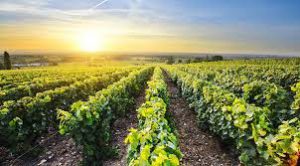
Cornell engineers and plant scientists collaborated to develop a low-cost system which allows grape growers to predict their possible yields more accurately early in the season.
The new method allows a grower use smartphone to video grapevines while driving a tractor or taking a walk through the vineyard at night. The growers then upload the video to a server to process the data. The system depends on computer vision to improve the reliability of yield estimates.
Customary methods for estimating grape clusters numbers are done manually by workers, who count a subset of clusters on vines and scale the numbers up to account for the entire vineyard. This method is expensive, inaccurate and time-wasting, with average count error rates up to 24% of actual yields. The new methods slashes the maximum average error rates by almost half.
‘This could be a real game-changer for small and medium-sized farms in the Northeast,’ said Kirstin Petersen, Assistant Professor of Electrical and Computer Engineering in the College of Engineering. Petersen is a co-author of the paper, ‘Low-Cost, Computer Vision-Based, Prebloom Cluster Count Prediction in Vineyards’ published in April in the journal Frontiers in Agronomy. Some other authors include Jonathan Jaramillo, doctoral student in Petersen’s lab; Justine Vanden Heuvel, Professor in the School of Integrative Plant Science Horticulture Section in the College of Agriculture and Life Sciences.
When the traditional methods are used, accuracy is greatly dependent on the person counting. The researchers found that for a panel of four vines containing 320 clusters, manual counts ranged from 237 to 309. Workers count the amount of grape clusters in a small portion of the vineyard to get an average number of clusters per row. Farmers then multiply the average by the total number of rows to predict yields for a vineyard. Thus, when the cluster numbers are inaccurate, multiplying only amplifies inaccurate yield predictions.
One merit of the technology is that its counting is always accurate. Although the new method also has counting errors, the numbers aren’t magnified by counting a subset of vines and then multiplying.
‘We showed that compared to the technology, a farmer would have to manually count 70% of their vineyard to gain the same level of confidence in their yield prediction,’ Petersen said, ‘and no one would do that.’
There in fact exist high tech, accurate robot counters but they are very costly, making them inaccessible to small and medium-sized growers. A disadvantage is that they count grapes when they are nearer to ripening, late in the season around September or October. The new method counts cluster in May to June.
‘Having good predictions earlier in the season gives farmers more time to act on information,’ Jaramillo said. Farmers may secure labor and their buyers in advance, or if they are producing wine, they can obtain the right amount of equipment for production and packaging. ‘Not having these things lines up in advance can cause problems for growers last minute and ultimately reduce profits,’ Jaramillo said.
With the new method, an unskilled laborer may simply drive a tractor up and down the rows with a smartphone set up on a gimbal. The researchers will field test an app this summer. They intend that this app is open-sourced and the machine learning components setup is such that users simply upload their video to a server that will process the data for them.
‘The success of this project relied on the combined knowledge of engineering, farmer practices and plant sciences, which is a great example of interdisciplinary sciences at Cornell,’ Petersen said. ‘There’s nothing else like it.’
The project is funded by the National Science Foundation, the U.S. Department of Agriculture’s National Institute of Food and Agriculture and the Cornell Institute for Digital Agriculture,
By Marvellous Iwendi.
Source: Cornell University